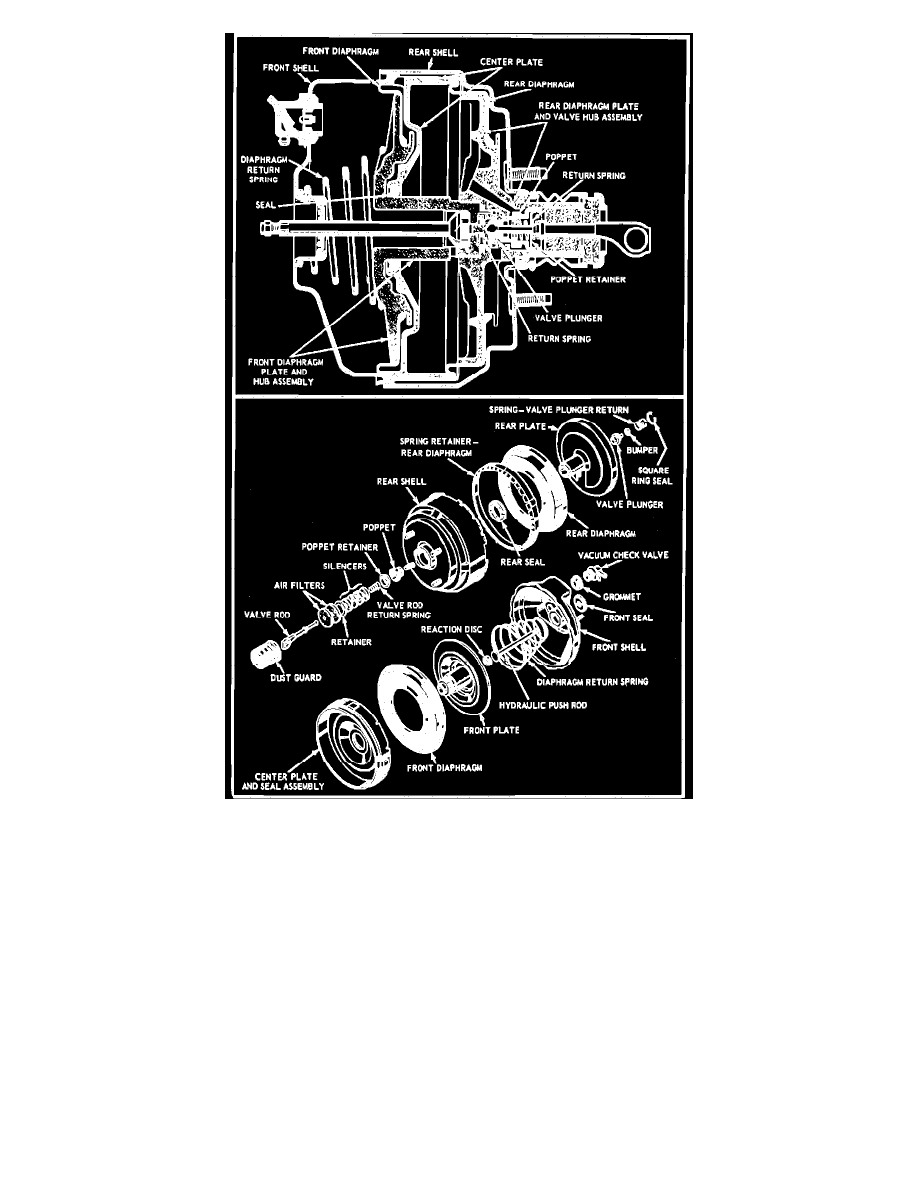Probe V6-182 3.0L (1990)

Fig. 3 Bendix Tandem Diaphragm Power Brake (Type B-2)
These units are of the vacuum suspended type. Some units are of the single diaphragm type, Fig. 2 while others are of the tandem diaphragm type, Fig. 3.
Both single piston and double piston or split system type master cylinders are used.
The vacuum suspended diaphragm type units utilize engine manifold vacuum and atmospheric pressure for its power. It consists of three basic elements
combined into a single power unit. The three basic elements of the single diaphragm type are:
1.
A vacuum power section which includes a front and rear shell, a power diaphragm, a return spring and a pushrod.
2.
A control valve, built integral with the power diaphragm and connected through a valve rod to the brake pedal, controls the degree of brake
application or release in accordance with the pressure applied to the brake pedal.
3.
A hydraulic master cylinder, attached to the vacuum power section which contains all the elements of the conventional brake master cylinder
except for the pushrod, supplies fluid under pressure to the wheel brakes in proportion to the pressure applied to the brake pedal.
OPERATION
Upon application of the brakes, the valve rod and plunger move to the left in the power diaphragm to close the vacuum port and open the atmospheric
port to admit air through the air cleaner and valve at the rear diaphragm chamber. With vacuum present in the rear chamber, a force is developed to move
the power diaphragm, hydraulic pushrod and hydraulic piston or pistons to close the compensating port or ports and force fluid under pressure through
the residual check valve or valves and lines into the front and rear wheel cylinders to actuate the brakes.
As pressure is developed within the master cylinder a counter force acting through the hydraulic pushrod and reaction disc against the vacuum power
